New Treasures: Gygax Magazine, Issue #1
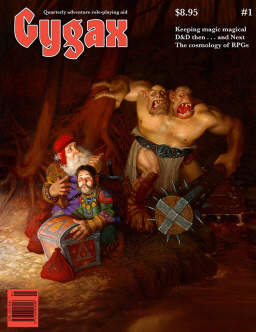 I don’t think it’s an exaggeration to say that the hottest thing in role playing at the moment is the rise of OSR. The Old School Renaissance has captured the interest of thousands of players — many returning to gaming for the first time in decades — and fostered the birth of a fresh generation of dynamic new companies. We’ve featured some of the best products here on the BG blog, including Carcosa, Astonishing Swordsmen & Sorcerers of Hyperborea, Dungeon Crawl Classics, Labyrinth Lord, and even the first edition Premium AD&D reprints from WotC. But truthfully this is just a small sample, and more exciting products are arriving daily.
I don’t think it’s an exaggeration to say that the hottest thing in role playing at the moment is the rise of OSR. The Old School Renaissance has captured the interest of thousands of players — many returning to gaming for the first time in decades — and fostered the birth of a fresh generation of dynamic new companies. We’ve featured some of the best products here on the BG blog, including Carcosa, Astonishing Swordsmen & Sorcerers of Hyperborea, Dungeon Crawl Classics, Labyrinth Lord, and even the first edition Premium AD&D reprints from WotC. But truthfully this is just a small sample, and more exciting products are arriving daily.
In fact, even though the number of OSR players is still fairly small, in a strange way that’s part of the appeal. The size of the market, and the out-sized level of excitement and productivity associated with it, reminds players of the early days of D&D in the mid-70s, when only a core group of gamers were tuned in to the new phenomenon that would soon sweep the country. That was a tremendously exciting and dynamic time, and in some ways it feels like it’s happening all over again.
One thing that’s been lacking from this generation’s gaming renaissance though is a clear center. Ask old-school gamers what the center of the genre used to be, and most will give you the same answer: Tim Kask’s The Dragon, the print magazine published by TSR (and later WotC and Paizo) from 1976 to 2007, and published online since 2007. Launched to help nurture the rapidly growing fandom around Dungeons & Dragons, Dragon gradually became the publication for role-players of all persuasions. The magazine embraced the entire genre, and accepted advertising from virtually everyone, publishing news, unbiased reviews, and articles of interest to everyone in the hobby. To read Dragon was to be informed of everything of real importance to the industry, especially in the early days.
Dragon was essential to the growth of adventure gaming. The creators driving the fledgling OSR industry have managed to capture the spirit of original D&D, and the excitement it spawned, surpassingly well, and that’s led many to wonder: would it be possible to re-create the magic of the early Dragon as well? As the folks behind Gygax magazine — including Ernie and Luke Gygax, and The Dragon‘s founding editor, Tim Kask — have proven with their first issue, it is possible. The similarities with its spiritual parent magazine don’t end with the familiar name of the publisher: TSR, Inc.
We first reported on the magazine back in November, and I was delighted to see the first issue for sale at Gary Con V two weeks ago. I bought a copy immediately, and just flipping through the pages brought a warm sense of nostalgia. In size, tone, and design, it emulates the early issues of The Dragon marvelously — right down to the cover font.
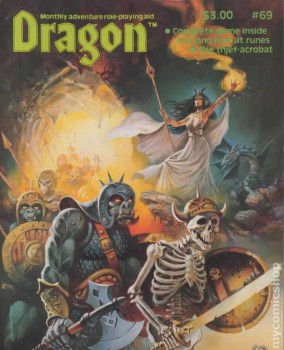 The premiere issue is a thick 64 pages, and it’s packed with eye-catching ads from a host of gaming companies, large and small. Perhaps it’s strange to admit that one of my favorite features of The Dragon were the ads, but they were. When an industry is thriving, one of the best indicators is a healthy assortment of advertisements from a diverse range of publishers, and that’s the first thing I looked for when I picked up Gygax.
The premiere issue is a thick 64 pages, and it’s packed with eye-catching ads from a host of gaming companies, large and small. Perhaps it’s strange to admit that one of my favorite features of The Dragon were the ads, but they were. When an industry is thriving, one of the best indicators is a healthy assortment of advertisements from a diverse range of publishers, and that’s the first thing I looked for when I picked up Gygax.
I was surprised and pleased to find over two dozen ads from most of my favorite game companies — including Pelgrane Press, Days of Wonder, and Fantasy Flight — and many I’d never heard of, selling board games, pre-painted dungeon settings, OSR rule books, PDFs, and much more. There’s nothing that lets you feel the pulse of the industry like a wide assortment of ads, and that’s exactly what Gygax gave me.
That was hardly the end of the welcome surprises. Perhaps best of all, there was even a selection of top-notch color comics in the back, including several that Dragon readers will remember fondly. The comics are Jim Wampler’s Marvin the Mage!, What’s New? with Phil and Dixie by Phil Foglio, and Rich Burlew’s marvelous The Order of the Stick.
The editorial, which appears under the joint byline of Luke Gygax, Ernie Gygax, editor-in-chief Jayson Elliot, Jim Wampler, James Carpio, and Tim Kask, is splendid, and hits exactly the right tone. I was concerned the magazine might be too focused on nostalgia, but this paragraph put that worry to rest:
We will cover games from all eras, including old editions and out-of-print classics, but also the latest offerings that are coming off the presses (or the PDF generators) today. Whatever the genre, however big or small the publisher, if it’s a wonderful game that brings people together to use their imagination, we care about it.
Of course, once I dug deeper into the content, I realized those fears were baseless. Gygax’s contributors do a marvelous job of striking the right balance between the old and the new.
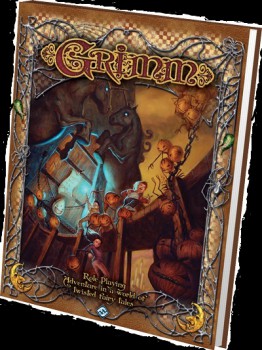 Games Editor James Carpio kicks things off with “The Cosmology of Role-Playing Games,” an attempt to put the major RPGs since 1974 in historical context — and map them on a single huge star grid according to design philosophy. An ambitious attempt like this is inevitably doomed to be incomplete, but Carpio does an admirable job of itemizing most titles — including frequently overlooked ones like The Primal Order, Toon, Prince Valiant, Cadillacs & Dinosaurs, Cyborg Commandos, Gangbusters, and Grimm (but not Torg, MechWarrior, Tribe 8 or the excellent Fading Suns, sadly).
Games Editor James Carpio kicks things off with “The Cosmology of Role-Playing Games,” an attempt to put the major RPGs since 1974 in historical context — and map them on a single huge star grid according to design philosophy. An ambitious attempt like this is inevitably doomed to be incomplete, but Carpio does an admirable job of itemizing most titles — including frequently overlooked ones like The Primal Order, Toon, Prince Valiant, Cadillacs & Dinosaurs, Cyborg Commandos, Gangbusters, and Grimm (but not Torg, MechWarrior, Tribe 8 or the excellent Fading Suns, sadly).
Unfortunately, I can’t make any real sense of his grid, which has time as an x-axis (increasing in both directions), and seems to have dispensed with a meaningful y-axis altogether. Still, it’s fun to puzzle over the vast star grid and try and make sense of it — and wonder just what the heck Dogs in the Vineyard, Dread, OctaNe, PDQ, ICONS, G-Core, Furry Pirates, Apocalypse World, Monsters and Other Childish Things, and Kill Puppies for Satan are.
I found more to enjoy in Tim Kask’s thoughtful reminiscence on his four decades in the hobby, “Still Playing After All These Years.” In articulating just who “the author” of a long-running campaign is (a question he was first asked in an interview in the early 70s), Tim has this to say:
The actual author of the ensuing story is what I call the hive-mind. In all good game sessions, the hive-mind appears. At some point from your vantage on the friendly side of the screen you will begin to notice that six are now seemingly able to think as eight, or even more. Now is the time that all good DMs shine, and lesser ones get run over roughshod.
The distinguished Lenard Lakofka, who wrote the “Leomund’s Tiny Hut” column for The Dragon for many years, returns with “Leomund’s Secure Shelter.” In this first installment, he mathematically examines which is superior: a sword with +1 to hit, or +1 damage. His analysis takes the form of a detailed mathematical proof, and he lost me at the words “with this formula,” but he concludes with “Take the +1 to damage now.” I’ll take his word for it.
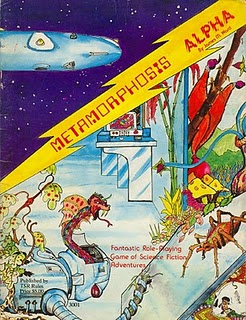 Ronald Corn picks up the threads of another popular Dragon articles series with “The Ecology of the Banshee,” a nicely detailed piece. Luke Gygax tells an entertaining story of an eBay quest for a copy of issue #8 of The Dragon, and Nevin P. Jones looks at the latest in gaming tech with “Gaming With a Virtual Tabletop.” Dennis Sustare shares some thoughts on “Keeping Magic Magical,” and science fiction author Cory Doctorow pens a brief article on “DMing for Your Toddler,” based on his own experiences with his four-year old daughter.
Ronald Corn picks up the threads of another popular Dragon articles series with “The Ecology of the Banshee,” a nicely detailed piece. Luke Gygax tells an entertaining story of an eBay quest for a copy of issue #8 of The Dragon, and Nevin P. Jones looks at the latest in gaming tech with “Gaming With a Virtual Tabletop.” Dennis Sustare shares some thoughts on “Keeping Magic Magical,” and science fiction author Cory Doctorow pens a brief article on “DMing for Your Toddler,” based on his own experiences with his four-year old daughter.
My favorite article in the middle section, however, is James M. Ward’s “Playing it the Science Fiction Way,” in which he shares a tale of sitting down for a regular gaming session with Gary Gygax, only to be told halfway through that the entire party had been transported to the Warden, the derelict spacecraft setting of James’s RPG Metamorphosis Alpha:
So I went and got my starship files from my car and sat at the end of the table where Gary always sat to referee the game. He had this look of glee on his face as he took up the character of his favorite dwarf. That night the group began exploring the colonization starship, Warden. They were fantasy characters in a science fiction world.
Fulfilling the promise in the editorial, the next batch of articles deals with more system-specific topics. Steve Kenson addresses “Great Power for ICONS,” for the ICONS Superpowered Roleplayer game, designer Dennis Detwiller contributes variant options for the Godlike RPG in “Talents off the Front Line,” Michael Tresca discusses “D&D Past, Now, and Next,” and Ernie Gygax offers a look at his father Gary’s unique storytelling ability in “The Gygax Family Storyteller.”
In a section entitled The Kobold’s Cavern, Wolfgang Baur, editor of the late, lamented Kobold Quarterly, presents an assortment of articles intended for that magazine that “were too good to pass away into darkness.” Randall Hurlburt unveils a variety of new magic items for the Adventure Game Engine (AGE), Rodrigo Garcia Carmona introduces the Inventor talent to AGE, and Marc Radle examines “Scaling Combat Feats for Pathfinder.”
Wolfgang (listed on the masthead as “Kobold Editor”) says future installments of The Kobold’s Cavern will bring new material for some of the leading modern RPGs, including Pathfinder, Dragon Age, 13th Age, and his own Midgard campaign setting.
But my favorite piece in this later section — and indeed, perhaps of the entire mag — is Etha Gilsdorf’s honest and dead-on memoir of a life of gaming, “The Future of Tabletop Gaming.” Gilsdorf spends more time talking about the past than the future, and that’s fine with me. In his analysis of the allure of D&D to young teen boys in the late 70s, Gilsdorf absolutely nails it, giving perhaps the most accurate description I’ve ever read:
I consumed the game, and it rapidly consumed me. My susceptibility to D&D was also encouraged by near-fatal character flaws: I was shy, introverted, and otherwise anti-social… I needed a focus, a place to become lost, to become obsessed by a single thing. D&D — the ultimate combination of reading, storytelling, drawing, geek knowledge, and imagination — was the clincher. I was hooked.
I was also yearning to belong to a gang, a group, a team of my own people. To win. And I finally did. I played a lot of D&D. I found my first fellowship of friends. I began to socialize. We began to play every Friday night from 5 pm to 11 pm, eighth grade till senior year in high school. From 1979 to 1984, I was under D&D‘s spell.
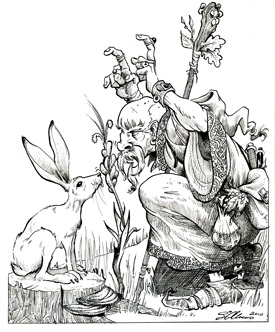
Like many other gamers, I found many of my closest friends through gaming — and it’s kept us together for decades.
I expected to see an adventure, and I wasn’t disappointed. Michael Curtis’s Gnatdamp is a complete and self-contained adventure setting, a city in a swamp, for use with most OSR systems. It’s well-written and the Adventure Seeds are inventive, but I was especially taken with the moody and whimsical artwork by Pete Mullen.
In fact, while I’m on the topic, overall the art in Gygax is excellent, starting with the marvelous cover by Daniel Horne. Art was an enormously important part of The Dragon — and all early RPG mags of the 70s and 80s, now that I think about it — and I’m very glad to see it hasn’t been neglected.
Jim Wampler is credited as Art Director, and he’s done a terrific job. The b&w pieces illustrating the articles, several of them full page, showcase artists (and an editorial team) with a lot of talent, and a clear sense of fun.
I think fun may be the best single-word descriptor I can use to sum up the entire magazine. The publishers have assembled an incredibly talented crew of writers, artists and editors for this first issue of Gygax, and the magazine they produced exceeded my (very high) expectations. They obviously worked very, very hard to both pack it with worthwhile content, and make it visually appealing — right down to the font, art, and design choices, and even the wealth of ads.
That level of commitment is something rare. This first issue of Gygax is something exceptional, but it carries the clear seeds of being something even greater. Get on board now — you won’t be disappointed.
Gygax magazine is published quarterly by TSR Inc. Issue #1, February 2013, is 64 pages, with a cover price of $8.95 ($4.95 for the PDF). You can purchase copies at their website.
As soon as I saw that cover painting, and that font for the magazine title, I was searching out the subscription page.
Was there ever anything better than Dragon magazine circa issues 50-150?
No indeed. It was the flagship publication during perhaps the most exciting period in gaming.
The issues still make fine reading today — if you can find them.
I still have boxes with my run from, I think, #46 into the low 200’s. (The earlier issues are in … not so good shape.) Those aren’t going anywhere!
I doubt I’ll fill as many boxes with Gygax, but I’m certainly willing to give it a try. (And I’m getting the print edition — eBooks are fine for some things, and if I had a tablet I might be willing to try the PDF, but it’s not something I want to read sitting in front of my monitor here.)
According to the Paizo website, hard copies of the magazine are already on backorder. Nuts!
Do you know if there are more coming?
Thank you for the awesome review 🙂 I am the community manager for Gygax Magazine and will be sharing this over our Google+ account.
Yes, issues on Paizo are already on back order! We sold out much faster than expected. We are sending them more issues and it will be available again soon.
You can also purchase from Noble Knight Games.
> I doubt I’ll fill as many boxes with Gygax, but I’m certainly willing to give it a try.
Here’s hoping it has a long, healthy run… and years from now gamers are talking about boxes filled with GYGAX magazine.
Susie,
Glad to hear it — both that the print issue outsold expectations, and that more are on the way. Noble Knight is a terrific seller, and I recommend them highly.
You’re most welcome for the review. Drop by any time to keep us posted on the latest!
Thanks fot the heads up. Ordered it via Noble Knight today and they have a special that you get free PDF when you order the paper copy.
Tiberius,
Thanks for the tip — that sounds like a great deal!
I should pick it up for the What’s New? with Phil and Dixie alone.
I understand next issue they’re doing sex and D&D.
Ha!!
[…] of those classic adventures would bring them back into the hands of games – especially OSR players –for the first time in […]
[…] been anxiously (and impatiently) awaiting the second issue of Gygax. I reviewed the fabulous first issue back in March, and thought it was entirely successful at capturing the spirit of the earliest days […]
[…] which I reviewed last December — and buy a copy of the hot-of-the-press first issue of Gygax Magazine. I also met the friendly folks at Faster Monkey Games, and bought a copy of Castle Ravenloft from […]
[…] reviewed the first issue last March, and I was very impressed. Issue #2 was released in time for Gen Con, and I’ve […]
[…] which I reviewed last December — and buy a copy of the hot-of-the-press first issue of Gygax Magazine. I also met the friendly folks at Faster Monkey Games, and bought a copy of Castle Ravenloft from […]